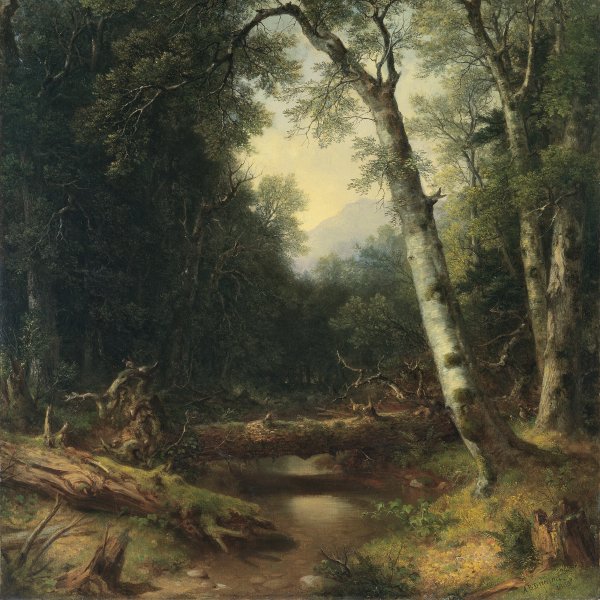Asher B. Durand
A friend and contemporary of Thomas Cole, Asher B. Durand was one of the foremost members of the Hudson River School and played an instrumental role in the theory and practice of American landscape painting. He trained as an engraver at the workshop of Peter Maverick in Newark and, following a five-year apprenticeship, moved to New York with his master in 1817. About 1818 he began to attend drawing classes at the American Academy of Fine Arts and soon became the most important engraver of the time. In 1826 he was involved in establishing the Drawing Association of New York, which later became the National Academy of Design, of which he was director from 1845 to 1861.
Although Durand began to execute portraits of prominent figures around 1830, his interest shifted to a different field following his trip to the Adirondacks and Lake Schroon with Thomas Cole in 1837. There he made a great number of sketches from life, an area in which he was a pioneer. Thenceforward he concentrated on landscape painting and became one of the staunchest advocates of this genre as the true source of inspiration of the American artist.
During the summer of 1840 Durand set off on what would be his only visit to Europe accompanied by his painter friends John F. Kensett, John Casilear and Thomas P. Rossiter. The tour, which began in England, also included France, Germany, Switzerland and Italy. These travels left an important mark on his painting, and he was especially influenced by the work of Claude Lorrain and John Constable. On returning in 1841, he exhibited the paintings he had executed in Europe and resumed his trips to the Hudson River area. Thomas Cole’s early death in 1848 made Durand an even more important figure on the American art scene. His reputation was further enhanced by the publication of his “Letters on Landscape Painting” from 1855 to 1856 in The Crayon, an influential periodical partly edited by John Durand, his son and first biographer. In his letters Durand explained the fundaments of the Hudson River School to an imaginary pupil. In 1869, after spending his whole life in New York, Durand returned to his hometown, where he was visited by many young artists.





